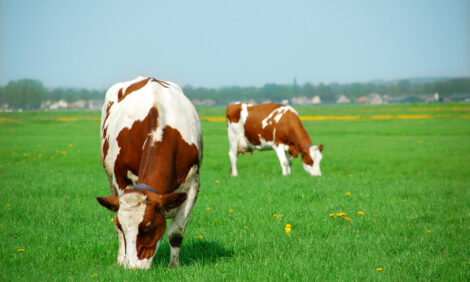



NCBA Recommends Major Stucture Change
US - The cattle industry is in the fight of its life, and members of the National Cattlemen’s Beef Association (NCBA) are considering a structure change that would allow the nation’s largest cattle organisation to quickly and efficiently address industry challenges without sacrificing grassroots input. The change is being recommended by producers and state organisation executives from across the country who participated in NCBA’s Governance Task Force.The change includes development of a smaller Board of Directors, while retaining strong producer input through a new House of Delegates. The recommendation is being submitted for review and approval of the concept at the 2010 NCBA Annual Meeting in San Antonio, Texas, next month.
“We are being attacked on many fronts by rapidly changing issues and well-heeled groups, which are light on facts but heavy on funding, and they are threatening to put cattlemen out of business,” said Jan Lyons, co-chair of the NCBA Governance Task Force, NCBA past president and beef producer from Manhattan, Kansas. “We’ve carefully reviewed challenges involved with restructuring, including the legal ramifications, and we believe our recommendation improves our organisation and makes it the lean, mean fighting machine we need to face the forces lining up against our industry.”
The Task Force is recommending a 29-member Board of Directors, 26 of whom are elected by a 250-vote House of Delegates and three ex-officio non-voting members. These include the Federation of State Beef Councils Chair and Vice-Chair and the NCBA CEO. The House of Delegates will include 100 votes from NCBA Affiliates, 100 votes from State Beef Councils, and 50 votes from breed associations and other interested groups.
“Grassroots input through the House of Delegates is crucial to the success of the new structure, says NCBA Past President and Task Force Co-Chair John Queen, a beef producer from Waynesville, North Carolina. “Members of the House of Delegates will vote on policy and demand building programmes to be recommended to the Board of Directors, which will be the body with legal and fiduciary responsibility for the association.” According to Mr Queen, committees of beef producers who share common interests (such as cow-calf operators, feeders or those interested in beef demand) will provide grassroots input to the House of Delegates.
Mr Queen says the Governance Task Force conducted a deliberate process in developing the recommendations, starting with listening sessions of producers when the group was established in July, 2008. In the end, it was determined that the current structure, which includes a 274-member Board of Directors, is unwieldy and makes authority and accountability within the organisation difficult. The problems and gaps in the current structure were discussed and approved by the Board of Directors last July.
One of the Task Force’s charges was that recommendations comply with the Checkoff Act and Order. Legal counsel and the US Department of Agriculture were consulted throughout the process, and “the task force is confident our recommended structure is legal and consistent with the Act and Order,” Mr Queen says.
“As a former board member of my State Beef Council in Kansas and also as a former chair of the Cattlemen’s Beef Board, I believe the Federation will have the strongest voice on demand-building programmes in the House of Delegates and the Board because they are the experts on these matters at NCBA,” said Mr Lyons. “And as ex officio members to the Board, the Federation chair and vice chair will have a considerable influence with the 29-member Board.” Mr Lyons added that NCBA would continue, at the direction of its Board, to propose beef demand building and protecting programmes to the Beef Promotion Operating Committee.
Representatives from all segments of the industry studied, debated and crafted the new structure recommendation, according to Mr Lyons. The 21-member Task Force included both producer members and state organisation staff interested in improving their national organisation and the entire industry.
“This structure change is a move the Task Force believes NCBA needs to be made,” says Mr Lyons. “The consumer marketplace has never been more challenging. And the policy climate in Washington, District of Columbia has never been more volatile. We need an organisation that can move quickly, precisely and with unity. The future of our industry depends on it.”
The Task Force’s recommendation will be submitted to the NCBA Executive Committee in San Antonio, and be discussed by the full Board of Directors during its Annual Meeting 30 January 2010. If the Board approves the direction, bylaw changes would be developed and voted on at the Summer Conference in Denver next July. Implementation of the new structure would begin upon approval of the bylaw changes by the Board.
TheCattleSite News Desk


